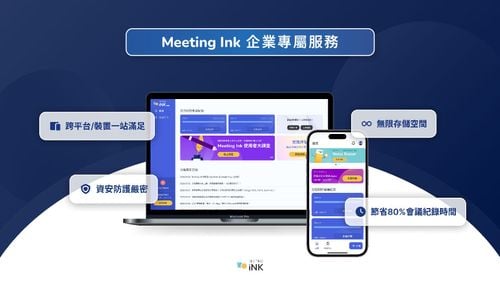Disruptive innovative business model Qiyi Medical Electronics launches mobile medical device-ECG sensor to create the last piece of the puzzle in telemedicine
With the advent of the post-epidemic era, the development of global telemedicine is in the ascendant, which has greatly increased the demand for smart medical technology in decentralized medicine Among them, if mobile medical devices can provide real-world at home or outside the hospital data for use in hospitals, it is believed that it will reduce the burden of diagnosis and treatment on doctors or medical personnel and reduce health insurance expenses To this end, Singular Wings Medical has launched a comprehensive telemedicine solution, which combines excellent wearable mobile medical device design, innovative software development, AI algorithms and cloud platform services, and will become the last piece of telemedicine puzzle
David Lee, the founder and general manager of Qiyi Medical Electronics, said that his original intention to start the business was because he witnessed Taiwan's long-term pursuit of low-cost mass production, which led to the continuous decline in the value of the industry For example, in the past thirty years, The output value of the former Silicon Valley was similar to that of Taiwan's Hsinchu Science Park, but thirty years later, the output value of Silicon Valley reached US14 trillion at the end of 2020, while the output value of Hsinchu Science Park was less than NT15 trillion at the end of 2021 Seeing Silicon Valley's sensitivity to industry needs and disruptive innovations such as Uber, Airbnb, industry trends and the post-epidemic era have driven a surge in telemedicine services, thereby creating high industry value, so I started a business at the age of 45 and conceived how to combine it with Taiwan After more than ten years of accumulated industrial advantages and Silicon Valley's innovative model, we decided to help Taiwan's industry upgrade and find a new path through the integration of the medical industry, ICT technology industry and innovative business models Seeing that Taiwan has always been a gathering place for the most elite talents in the medical industry and electronics and electrical industry, I believe that through the combination of the two and innovative business models, we can have the opportunity to follow Silicon Valley and create a different business
According to Taiwan’s Communication Diagnosis and Treatment Methods, Taiwan’s market demand for telemedicine is divided into two situations emergency such as COVID-19 and special necessity such as special geographical locations such as outlying islands or mountains It is allowed Carry out communication medical diagnosis In fact, the development of global telemedicine decentralized medicine is in the ascendant, but the demand for smart medical technology to meet decentralized medicine still needs to be realized In addition to the medical technology gap, it also includes medical treatment flow, patient identification, remote Remote consultation and collection are fueling the push for smart medical technology Li Weizhong observed that for telemedicine decentralized medicine to be successfully implemented, it is best to use telemedicine devices that are used outside the hospital or at home and are easily available in daily life Among them, the data of the device is the key It can provide doctors with out-of-hospital real-world data Real World Data or Real World Evidence that they can trust and apply, so that they can improve their diagnosis and treatment methods In fact, this type of telemedicine device is not popular, making remote medical care difficult to complete In addition, as the number of wearable devices such as bracelets and watches increases, most of the data that these devices can truly provide is insufficient for medical purposes and is not easy to validate and verify Li Weizhong said that people are paying more and more attention to health awareness, which is a positive encouragement for telemedicine devices He believes that as long as there is an appropriate business model and the right way to cooperate with hospitals and doctors can reduce the burden on doctors or medical personnel and reduce health insurance expenditures, Qi Yi Medical Electronics will definitely have the opportunity to become the last piece of the puzzle in telemedicine
Founded in 2015, Qiyi Medical Electronics’ core team consists of 22 diversified professionals, including young engineers with medical, engineering and information backgrounds and experienced entrepreneurs, working together to create an overall solution for remote healthcare The solution includes hardware design, software development and backend cloud platform services for the mobile medical device Beatinfor Health electrocardiogram sensor Electrocardiogram ECG is one of the most important vital signs body temperature, pulse, respiration and physiological data of the human body, which can reflect various physiological changes in the human body, such as cardiovascular health, inflammation, infection, bleeding, injury or anxiety index changes For this core concept, Qiyi Medical is committed to using wearable electrocardiograms as its core technology, while collecting important vital signs and environmental parameters such as electrocardiograms, and building AI algorithm systems and backend cloud platform services based on big data and machine learning to help solve remote problems Specific chronic diseases such as cardiovascular disease, sleep problems, and metabolic diseases are the most important in medical treatment
Electrocardiogram sensor continuous physiological data monitoring reduces the risk of death in acute heart failure patients by 11 within 30 days after discharge
In order to realize remote medical services, Qiyi Medical Electronics has launched a complete set of remote medical care solutions, including wearable mobile medical devices-electrocardiogram sensor BEATINFO ECG, BEATINFO HEALTH APP, and AI algorithms , web pages and BEATINFO HEALTH cloud service platform The BEATINFO ECG sensor is an exclusive device for the BEATINFO HEALTH APP health cloud platform It can be used continuously for 40 hours when fully charged The device is only 15g This sensor can collect the user's electrocardiogram, respiration, and skin temperature through a patch or chest strap , body movements, postures and environmental parameters Currently, BEATINFO ECG sensor has 8 patents in the United States and Taiwan, and won 2 German iF Design Awards in 2017
Mobile medical device-electrocardiogram sensor can provide continuous physiological data monitoring
In terms of overall technical features, the BEATINFO HEALTH cloud service platform has four key physiological data detection characteristics continuity, long-range, real-time and dynamic In terms of operation, users can download the BEATINFO HEALTH APP on Android or iOS systems Its interface can provide physiological data status, order health assessment reports such as one-day sleep assessment report or cardiovascular health assessment report, and high-intensity exercise test Cardiovascular assessment reports, third-party remote medical consultation services and other functions Users use patch-type or chest-strap ECG sensors paired with end-to-cloud platforms for continuous physiological detection Before being transmitted to the cloud for further calculations, all data will be de-identified and made available to professionals Data reports are provided for physician judgment The BEATINFO HEALTH cloud service platform has powerful noise filtering processing capabilities, fast waveform recognition and judgment, as well as highly complex cloud architecture and communication technology Why is the noise filter processing capability so important Because medical equipment in general hospitals must require users to complete short-term measurements under static conditions Usually, data in life situations outside the hospital cannot be collected by the hospital, and this data is very important to doctors It is increasingly important to understand the progression of the disease and the condition of patients leaving the hospital Therefore, if we continue to record very weak ECG signals in daily life, we actually need to overcome a very high technical threshold After these signals are processed by the noise, they will first be judged by the AI algorithm before preliminary and rapid conclusions can be made Users can instantly avoid certain fatal risks The cloud architecture provides a deeper level of second-order computing and also covers the business model architecture It provides service models such as user management, automatic report generation, record keeping, alarm notifications, and connection with more services such as third-party alarms Emergency rescue, third-party medical consultation, doctor and patient docking, medical treatment cash flow and other functions
In terms of competitive advantages in the industry, compared with the industry's braceletwatch products, Qiyi Medical's electrocardiogram sensor BEATINFO ECG provides accurate medical-level measurements, and can continuously record and collect physiological data, improving any Sudden or sporadic symptoms may occur Compared with the electrocardiogram patch of its peers, it provides real-time data return and web-based management tools, and can produce various reports for managers to remotely manage a large number of users on the web According to statistics from Beijing Medical University, the mortality rate of patients with acute heart failure within 30 days after discharge is as high as 11 If an electrocardiogram sensor is installed on the patient for continuous and real-time monitoring for 30 days, it is possible to reduce part of the risk of death, and at the same time, it can Significantly reduce health insurance costs Additionally, in the case of cardiovascular disease, if the user wears the device for a period of time, regular cardiovascular assessment reports can be obtained and provided for follow-up in-depth examinations by doctors
In addition to the measurement of cardiovascular diseases, the ECG sensor configuration can provide home assessment of sleep apnea OSA During the measurement, patients can discover potential and easily overlooked cardiovascular diseases, and users do not need to stay in the sleep ward for treatment After a boring night, through the ECG sensor patch and AI algorithm, patients only need to sleep at home for one night to receive an OSA test report If needed, doctors can access patient status remotely and instantly via any internet browser Therefore, through the ECG sensor wearable service, users can discover hidden and unknown cardiovascular diseases such as arrhythmias related to sudden death from the measurement process to avoid unnecessary regrets
Qiyi Medical Electronics’ business model is mainly B2B2C, hoping to assist individuals, hospitals, enterprises, care services and other units to create a win-win situation Li Weizhong analyzed that the business cooperation model is quite flexible, whether it is leasing or buying out wearable measurement devices, or providing annual report subscriptions to reduce the cost of purchasing devices for users, such as including 2-minute electrocardiogram, Flexible subscription package including 7-day cardiovascular health assessment, exercise cardiovascular health assessment, sleep health assessment report, etc
Group cardiovascular monitoring system solution creates a many-to-many real-time physiological information monitoring platform to replace diagnosis with prevention
In addition to providing individual users with remote mobile physiological data measurement, the BEATINFO cloud platform provides a "group cardiovascular monitoring system" solution that can create many-to-many real-time physiological information monitoring through network technology Based on the platform, patients only need to wear a lightweight monitoring patch, and the back-end system can grasp the changes in their physiological information, so that prevention can replace diagnosis and reduce the chance of sudden cardiovascular death This platform provides 3 functions, including the ability to manage different users into groups and hierarchically, and the number of users can reach tens of thousands it can display users’ basic physiological information in real time on web tools, and can be used under certain preset conditions When triggered, this platform will immediately send out an alarm historical data can also be reviewed on the platform, which is very suitable for doctors to check the patient's disease progression outside the hospital during consultation
For the application of the "Group Cardiovascular Monitoring System" solution, taking high-intensity exercise as an example, such as long-distance running and cycling, mountain climbing activities or traveling abroad, a prior cardiovascular health assessment is required activities, and corresponding evaluation reports This report allows users to share it with doctors, so that participants can make assessments before the event or test their training effectiveness, which can significantly reduce the risk of accidents during the event beforehand During the activity, the group cardiovascular monitoring system also provides real-time on-site monitoring of a large number of participants It can be monitored in real time by the AI in the background at the moment of exercise Once an accident occurs, the platform can immediately issue an alarm and even report the accident GPS positioning of the location, and continuously transmits back the user's physiological information during search and rescue, striving for golden rescue time
In sports monitoring applications, taking golf as an example, how to improve golfers' puttinghitting performance A player's performance and concentration are usually directly related to personal emotional stability Li Weizhong said that through HRV analysis of Qiyi Medical's electrocardiogram device, it can help determine the player's emotional and stress index performance, and at the same time help golf coaches select and train players
The group cardiovascular monitoring system can create a many-to-many real-time physiological information monitoring platform
Establish a firm foothold in Taiwan, move towards the US and European markets, and move towards the goal of a data company
Faced with the challenges of technology research and development and market promotion, Qiyi Medical Electronics’ automatic identification of electrocardiograms requires a large amount of data for AI calculation development For this reason, Qiyi Medical Electronics must cooperate with hospitals and develop jointly Finish At present, the company has established good cooperative relations with many medical centers and research units, and has overcome these technical bottlenecks one by one In terms of market promotion, Li Weizhong said that the biggest challenge facing Qiyi Medical Electronics is to communicate with the market and let the public understand the differences between competitors' bracelet and watch products and the company's mobile device-electrocardiogram sensor Compared with the common bracelet and watch products on the market that collect electrocardiogram data in a discontinuous manner, it may take a long time to collect discontinuous data before potential cardiovascular problems can be discovered by luck Qiyi Medical Electronics actively promotes electrocardiogram to the public in a continuous manner The competitive functional characteristics of sexual detection data and emphasize that it is a very important means to assist in the detection of many potential diseases, replacing diagnosis with prevention and reducing the occurrence of unnecessary cardiovascular diseases In addition, in terms of business promotion, we also hope to create more opportunities for business matching and new venture capital raising with the assistance of the Corporate Resource Strategy Council
Looking to the future, Li Wei and Xu Qiyi Medical Electric Energy will become the last piece of the telemedicine puzzle in the health wearable device-electrocardiogram service Li Weizhong said that in the short term, Qiyi Medical hopes to gain a firm foothold in Taiwan and become a common medical device in everyone's home, just like thermometers and blood pressure monitors The company is also constantly developing new indications Starting from electrocardiogram, coupled with AI and big data, it can deal with more chronic diseases In addition to cardiovascular diseases, we have also successively developed sleep apnea and other more special diseases The applications are aimed at the problems of elderly chronic diseases that modern people are very likely to encounter With a mid- to long-term plan, Qiyi Medical will enter the US and EU markets, become an international company, and continue to aim to become a data company, making good use of the company's long-term collection of data applications to provide services in diverse fields such as new drug development and vaccine development application to create business opportunities and profits
「Translated content is generated by ChatGPT and is for reference only Translation date:2024-05-19」


